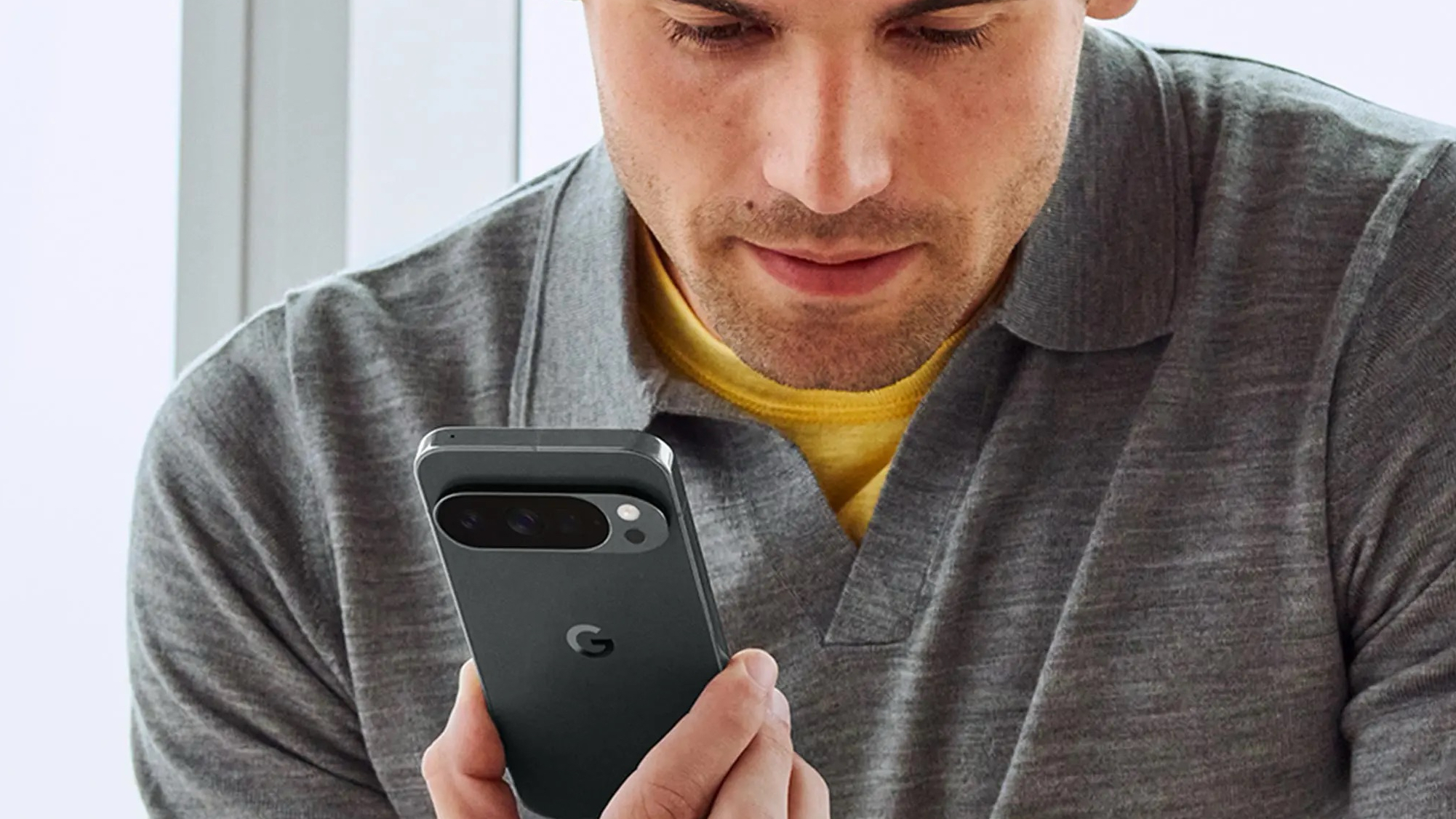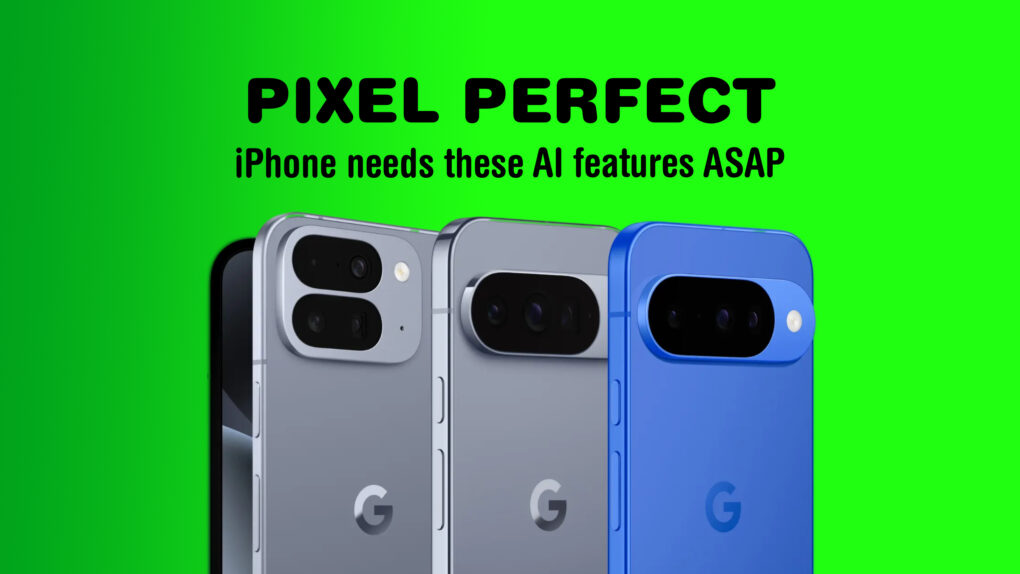Google’s new Pixel 10 lineup shows just how much fun (and just how useful) AI can be on a phone. If Apple really wants the iPhone 17 lineup to shine, it should steal a few pages from Google’s playbook.
The iPhone 17 needs more than impressive new hardware to stand out from the crowd. It needs new AI features to make an impact, especially with the Pixel 10 raising the bar.
iPhone 17 desperately needs these Pixel 10 AI features
As seen in this week’s Made by Google event, the latest flagship Pixel phones highlight how AI can solve real problems, not just sound futuristic. From surfacing relevant information automatically when on calls and messages to taking the hassle out of image editing, when done right, AI can transform how we use our phones.
Meanwhile, Apple has struggled with Apple Intelligence. And it’s not just about the delayed Siri upgrade. Apple Intelligence just doesn’t pack enough compelling AI features to stand out. With the iPhone 17, Apple should consider copying a few AI features from the Pixel 10 playbook to shine.
Table of contents: Pixel 10 AI features that iPhone 17 needs
- Magic Cue
- Voice Translate
- Pixel Screenshots gain NotebookLM integration
- Rephrase sentences with voice
- Conversational Editing in Photos
- Camera Coach
1. Magic Cue
Magic Cue is one of the best AI features on the Pixel 10. It offers personalized suggestions based on the content on your screen. For example, as Google explains, if a friend texts you asking about your flight details, Magic Cue will surface the relevant information instantly for you to share. Likewise, Magic Cue can find your flight details if you need to call your airline for some reason.
Magic Cue can pull relevant information from Gmail, Calendar, Messages, YouTube, screenshots and other Google apps. All the processing happens on-device and securely, ensuring there’s no risk to your data (which sounds very Apple-like). Plus, Google promises to expand the AI feature to support third-party apps.
Magic Cue leverages Gemini Nano and its deep integration across Google’s apps and services. Apple should also look into offering a similar feature as part of Apple Intelligence on the iPhone 17. A feature like this could seamlessly pull details from Messages, Mail, Calendar and other first-party apps to make everyday tasks faster. And if there’s any company that can pull off such a feature securely, it’s Apple.
2. Voice Translate
Another cool AI feature on the Pixel 10 is Voice Translate. Samsung phones can already translate your or the caller’s voice in real time to your preferred language, making international calls less of a hassle. Google’s implementation of Voice Translate goes a step further: It uses on-device AI to translate your call in real time in a voice similar to the speaker’s.
This is another great example of what deep AI integration can achieve in phones. Voice Translate on the Pixel 10 works in several languages, including translating to or from English, Spanish, German, Japanese, French, Hindi and Swedish.
Apple is bringing Live Translation to the Phone app and FaceTime calls with iOS 26. It will work for one-to-one calls. But unlike Google’s implementation, Live Translation on the iPhone or Mac won’t mimic the speaker’s voice. Instead, it uses a synthesized voice.
3. Pixel Screenshots gain NotebookLM integration
OK, Pixel Screenshots is not a new feature — it debuted on the 2024 Pixel 9. But with the Pixel 10, Google is making the feature even better by adding NotebookLM integration.
NotebookLM is an AI-powered app from Google that can act as your research and note-taking assistant. You can add notes, documents, PDFs and URLs, and the app will create a personalized AI-powered notebook from the info. From there, you can ask context-aware questions, request detailed explanations and more. For students, the app can significantly boost their research workflows.
On the Pixel 10, Pixel Screenshots ties neatly into NotebookLM. Take a screenshot of a PDF you’re studying, and if Pixel Screenshots ascertains that it is worth adding to a notebook, you’ll instantly get a prompt about it.
The integration also extends to the Recoder app. Record a class, and you can send the transcript straight to NotebookLM.
iOS 26 will allow using Visual Intelligence on screenshots. But that’s nowhere close to what Pixel Screenshots can do. And the NotebookLM integration only makes it better.
Apple doesn’t yet have a NotebookLM-style AI app for the iPhone or Mac. Considering how valuable such a tool is for research and productivity, Cupertino should strongly consider building something similar into Apple Intelligence.
4. Rephrasing sentences with voice using Pixel 10’s AI
Both Pixels and iPhones support on-device voice typing, making speech-to-text a breeze. With the Pixel 10, Google is leveraging its deep AI integration to make the experience better by adding Writing Tools support.
On an iPhone, you invoke Writing Tools by long-pressing on a text field, even if you’re using voice typing to input text. That’s not the case on the Pixel 10. You can directly use voice commands to rephrase or rewrite messages.
Given that Writing Tools is already deeply integrated into iOS and macOS, Apple should be able to easily add the same AI functionality to voice typing on the iPhone.
5. Conversational Editing in Photos

Photo: Google Store
AI has made photo editing tools far more powerful. You can now swap the sky’s color, erase people or unwanted objects from the background, and even expand an image seamlessly. The catch is that editing photos this way can be time-consuming.
The Pixel 10 solves this problem with Conversational Editing. In Google Photos, you can speak the edits you want, and the app will apply them. It will even provide suggestions about what edits you might want to make. Again, this is only possible because of Gemini AI’s superior processing of natural language.
6. Camera Coach
Although hardware makers try to keep things simple, camera modes on modern smartphones are pretty complex. Both Google and Apple show more restraint than others, keeping the number of modes relatively limited. But even then, not everyone might know which mode to pick when getting ready to snap a picture.
Camera Coach on the Pixel 10 takes care of this problem. It uses AI to determine the scene and provide suggestions on the lighting, angle and camera mode to use. Based on the scene, it provides multiple suggestions on how to capture the best possible picture. Pick the option(s) you like, and Camera Coach will guide you on how to frame your phone and the mode to select.
All this is again possible thanks to the deep Gemini integration on Pixel 10. Apple could take a cue from this and offer a similar Apple Intelligence-powered feature in the iPhone 17’s Camera app.
Final thoughts: Pixel 10 AI features the iPhone needs
Google’s Pixel 10 shows just how transformative well-integrated AI can be. If Apple brings even a handful of these features to the iPhone 17, Apple Intelligence could feel less like a buzzword and more like a genuine game-changer for everyday users.


